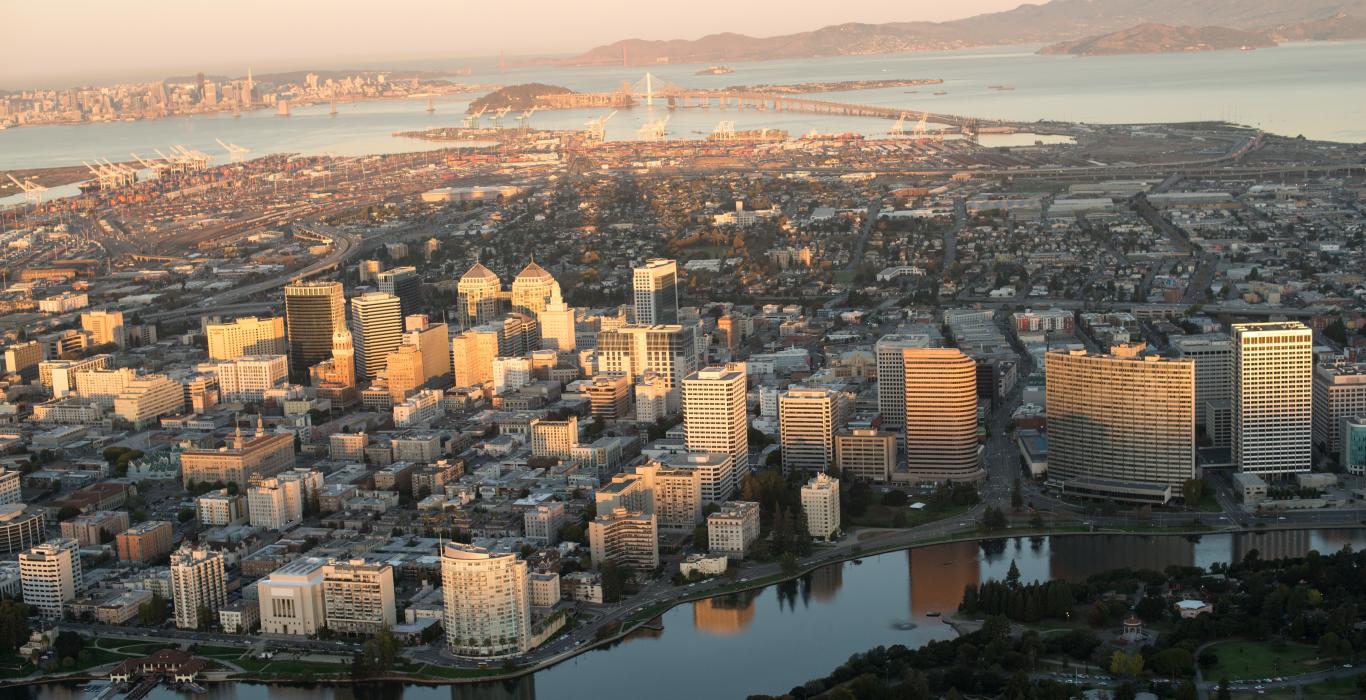Helping cities understand new housing element laws and community members engage in the process are a key part of SV@Home’s work. Cities are being asked to do more work to prove that housing actually can be built in the designated areas, said Mathew Reed, Director of Policy at SV@Home. Those strict, complicated state rules can make the process more challenging. “A lot of community process needs to be integrated in how and where cities plan for growth,” Reed said. “But there are also pretty clear rules and expectations from the state that need to be shaping that discussion. Sometimes it’s hard because it becomes sort of a political discussion about certain neighborhoods.”
BY: Marisa Kendall┃Bay Area News Group
PUBLISHED: February 28, 2022, 2:50 pm
Oakland has to plan for 26,000 new homes over the next eight years, and city officials want your help deciding where all that housing should go.
Nico Nagle, East Bay organizer with the Housing Action Coalition, has his eye on the area around the Rockridge BART station. Naomi Schiff of the Oakland Heritage Alliance wants to turn the City Hall parking garage and a vacant lot in Temescal into housing. James Vann of the Coalition of Advocates for Lake Merritt thinks the city should convert empty downtown storefronts into homes.
Now they can share their ideas using a new interactive map that allows people to mark sites they think would be appropriate for new residential development – and also to note where they don’t want to see housing built. Officials will take that input into consideration when drafting their state-mandated plan for new housing. The result will play a significant role in shaping Oakland for years to come, as the city and state grapple with an affordable housing shortage that has driven rents sky-high and priced out many low-income workers.
Residents have until March 7 to weigh in.
“I think it’s been a great tool,” Nagle said. The site allows the city to crowdsource information from residents who may pass an empty parking lot or vacant building every day on their way to work that could be turned into housing, he said.
Oakland also is in the process of updating its general plan – a blueprint that will guide the future of the city through 2045.
In an effort to make sure everyone is doing their part to produce enough housing, the state requires each city to create a “housing element” that plans for an assigned number of new homes every eight years. Between 2015 and 2023, Oakland was required to plan for 14,765 homes. That number will nearly double over the next eight years.
Cities all over the region are grappling with large increases. The nine-county Bay Area must plan for 441,176 new units by 2031 – up from 187,990 in the last cycle. Many local cities fought back and appealed the ambitious new targets, including Danville, Dublin and Los Altos. Nearly all of those requests were denied.
Other cities have accepted the goals and, like Oakland, are reaching out for residents’ input on where the new housing should go. San Jose is one of many cities hosting community meetings and soliciting feedback.
These meetings are just the first step in what will be a lengthy process to satisfy the state’s so-called Regional Housing Needs Allocation (commonly referred to as RHNA) requirements. Cities are required to set aside space for new housing, updating their permitting rules and changing zoning in certain areas if necessary to make sure the homes can be built. Then it’s up to developers to actually build the housing.
The state is cracking down on the process this year after many cities have failed to meet their housing requirements and others have openly flouted state housing mandates. Cities are being asked to do more work to prove that housing actually can be built in the designated areas, said Mathew Reed, policy manager at SV@Home. Those strict, complicated state rules can make the process more challenging.
“A lot of community process needs to be integrated in how and where cities plan for growth,” Reed said. “But there are also pretty clear rules and expectations from the state that need to be shaping that discussion. Sometimes it’s hard because it becomes sort of a political discussion about certain neighborhoods.”
In Oakland, Nagle wants to see the city build more housing near the Rockridge BART station. Close to transit, it’s the perfect place to replace one and two-story buildings with taller, denser apartments that can house more people, he said.
Several other people called into a Planning Commission meeting earlier this month to opine on the new housing element. Vann suggested the city look into converting downtown storefronts that have been sitting vacant during the COVID-19 pandemic. Schiff agreed, and also suggested the City Hall garage and the vacant Pleasant Valley Avenue site.
“Please put some housing there,” she said.
The housing shortage is hurting our residents, and the city’s new housing plan is a way to move closer to fixing that, Nagle said.
“Doubling the number of homes is what we’re doing,” he said, “because it’s what’s needed.”

